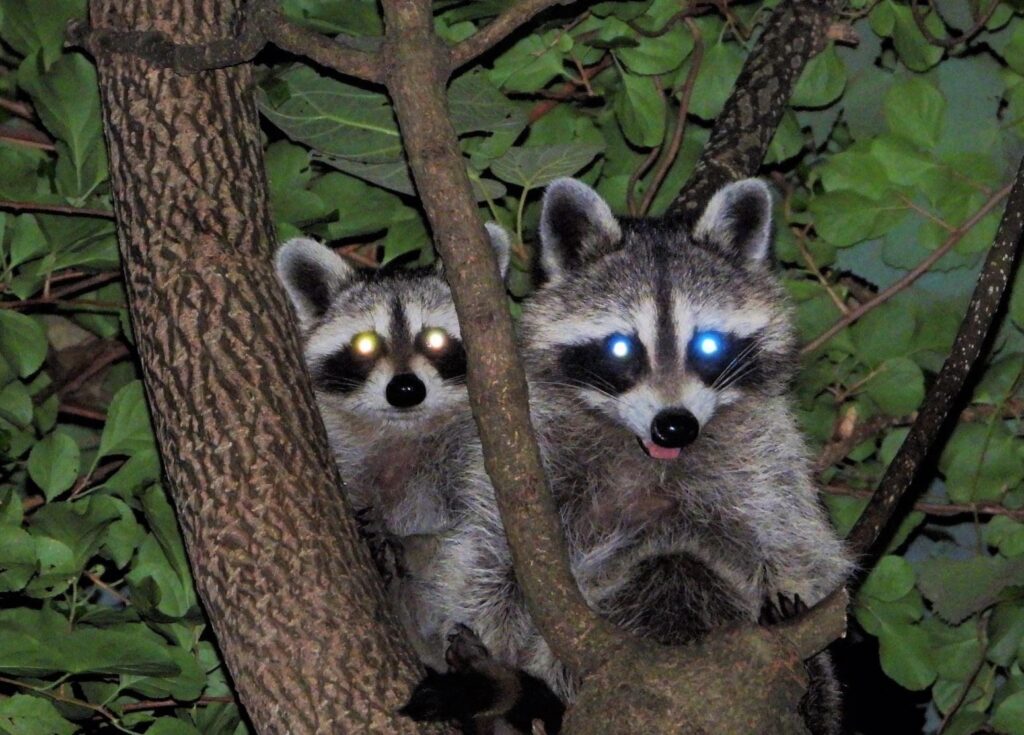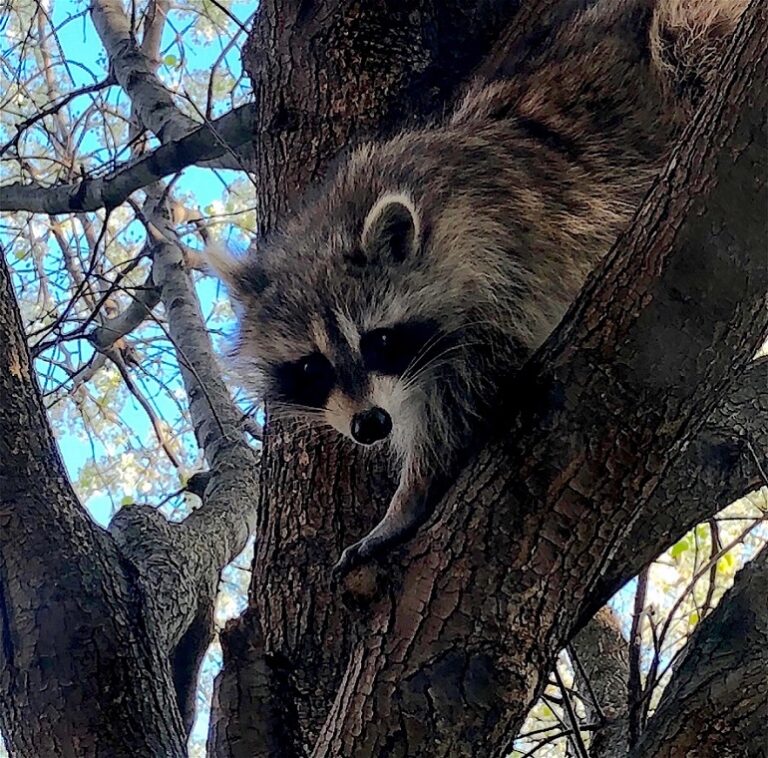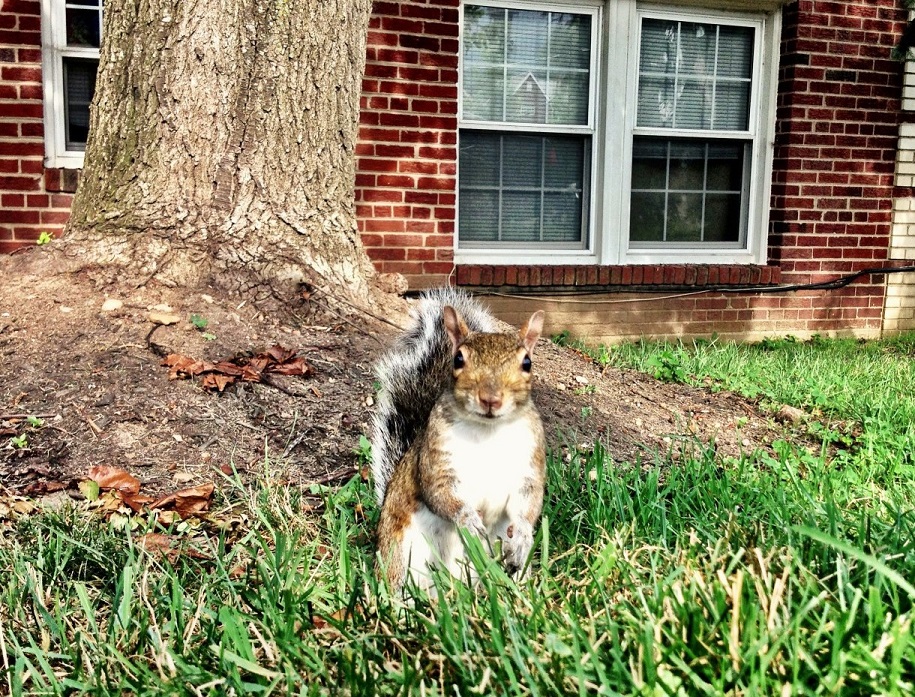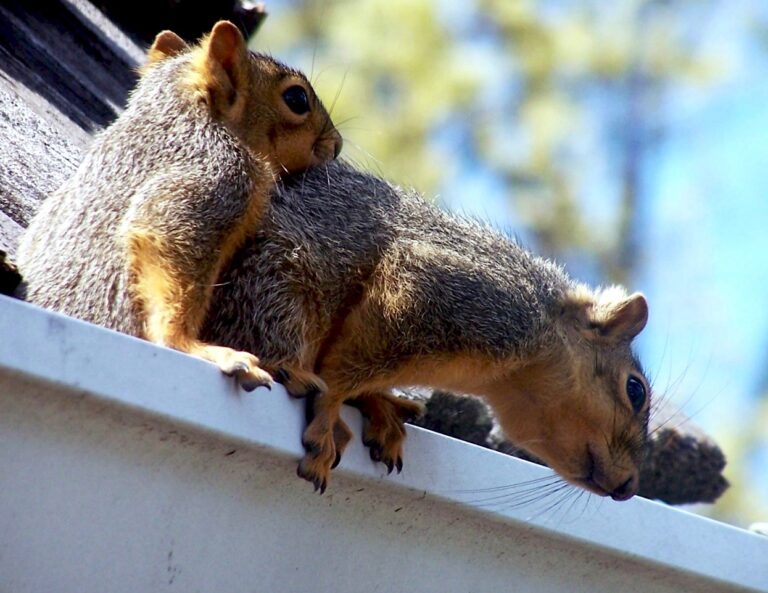 Can Raccoons Live In Trees In Your Yard?
Can Raccoons Live In Trees In Your Yard?
Have you ever noticed scratch marks made by animal claws on the trees in your backyard? Raccoons are most likely the animals responsible for these marks.
They are known for being nocturnal creatures that are active at night, so you might not see one climbing a tree during the day. They might have made your trees their home and only come out to hunt at night.
Can Raccoons Climb Trees? Are They Good Tree Climbers?
Raccoons are very good at climbing and they have many reasons for climbing trees. For instance, a raccoon might climb a tree to rest there for a while and look out for prey simultaneously. The raccoons are able to climb the tree very quickly and are known to be excellent tree climbers.
However, raccoons do not make their long-term homes in the tree branches but are very likely to make a hollow tree trunk their home. As a shelter, the tree trunk will protect the raccoon from predators and harsh weather conditions.
Raccoons have also been known to dig their dens at the base of trees and only occasionally climb the tree to get temporary rest and hunt for prey.
Anytime you notice a raccoon climbing a tree on your property, it is a sign that the raccoon has made a den nearby.
If the raccoon seems to disappear before it reaches the branches, it has its home in the tree trunk. Even if you do not see the animals physically moving up the tree, they are known to leave other signs as they climb, such as scratches and claw marks on the bark of the tree.
Why Do Raccoons Climb Trees At Night?
Being nocturnal creatures, raccoons will spend most of their days resting and sleeping. If your tree bark is not protected, they will climb up at night when they are more active and playful. If they have made their home in the tree trunk, they will come out at night to enjoy nature while hunting for their prey such as rats and other small animals.
If you have bird nests on the trees, the raccoons will climb right up to them and throw away the nests. The raccoons will stay up all night, and this is when they will be climbing the trees more frequently.
These animals also climb the trees to explore their territory and ensure that they are in a place where they can easily access food. Their fingers resemble those of a human, and with them, they can do a lot of tasks.
The raccoons like to climb the trees at night to find a spot that is high up in the tree. While in this spot, they will be able to find food more efficiently. At times, they will climb so high to escape predators and ensure that they can survive the dangerous creatures that roam at night.

Do Raccoons Sleep In Trees?
Raccoons prefer to stay in places with a source of water nearby and plenty of tree cover. However, they are also adapted to various urban and suburban settings, and you will find evidence of these animals everywhere. During the day, this wildlife will climb the tree to get a safe place to rest and sleep.
The raccoons prefer to sleep in large holes in the trees and the hollow parts of the fallen logs. However, they will stay inside their den when they are not outside hunting, and simply relaxing. Mothers taking care of their young ones will also find a large tree hole far away from predators to ensure that they raise their babies in a safe place.
Apart from the occasional rest, the raccoon will not spend their sleeping time exposed to the outside world since they are adapted to staying in dens. The young ones that have been left in the tree nests will also spend most of their time sleeping.
Do Raccoons Make Nests In Trees?
Raccoons will make their nests just about anywhere they can find a comfortable and safe place to live in. They can make their nests in tree cavities, abandoned burrows, chimneys, barns, and attics.
They have a knack for spotting ideal places to make their homes, and the trees that are already hollowed out are the ideal spot for the raccoons to make their nests. They are skilled and can be able to dig, given their sturdy claws.
As such, nothing can deter them from making their nests in trees which means that they can make their homes anywhere they prefer.
Their habitats are temporary and usually used during the feeding season. Once they are done with feeding the young ones, they will move on to another place and temporarily stay in their dens.
The nests in the trees are some of the best means of defense against predators and the elements. As the raccoons climb the tree, they will leave marks in the bark given their sharp claws.
These animals will quickly make their nests in the trees if it is tall and wide enough to create a nest that’s big enough for them to live in. The mothers that are raising young ones will also prefer the trees as a place to stay safe and bring up their babies in a healthy and conducive environment.
Getting rid of raccoons can be a challenging task as there are numerous factors that contribute to your raccoon problem. If you think you currently have a raccoon problem in or around your property, then you’re in need of a professional wildlife trapper who can eliminate your raccoons.
So call Westchester Wildlife today and let our experienced and highly qualified trappers help with all your raccoon removal needs.
 Why Do Squirrels Chew On Roofs?
Why Do Squirrels Chew On Roofs?
Squirrels are a significant rodent nuisance in most states, and the damage they cause can be a costly expense for homeowners. The great news is that it is possible to keep squirrels far away from your roof!
Your roof is a substantial investment that you must safeguard. Whenever squirrels cause damage to your roof due to their chewing, roof repairs are inevitable.
How Do Squirrels Get Into Your Roof?
Squirrels could invade a roof for a variety of reasons. Mating, a surge in predators, a reduction in habitat upon which to establish dens or even cold weather are examples of these.
The following are some of the most typical ways for squirrels to gain access to your roof:
– Roof vents
– Roof edges
– Roof-Soffit crisscrossing
– Gable vents
– Wall vents
– Plumbing mats
– Open, uncapped chimneys
Squirrels On Roof Sounds
Many times you’ll be able to hear squirrels running on your roof, particularly in the evenings and early mornings when they are most active.
Squirrels produce a variety of sounds to match their various actions. Whereas any noise coming from your roof is a telltale sign that a living creature has made its way into your home, learning the kinds of sounds squirrels commonly produce will assist you in identifying if they are to blame. These include:
– Rolling sounds
While they collect acorns, nuts, and other tiny objects, Squirrels tend to make rolling sounds. If they are on your roof, you will most probably hear them sliding these objects all across the flooring of your roof into various spots for safekeeping.
– Scurrying noises
Light dashing and scratching sounds over your roof surface indicate that squirrels on the roof are moving back and forth.
– Squeaking sounds
Squirrels make high-pitched squeaks that are unpleasant to the human ear. Residents could have difficulty sleeping at night if such disturbing sounds reverberate within their walls.
– Rustling sounds
Squirrels are always on the move during the day, building nests, keeping food, and scampering around. This type of activity will produce a lot of shuffling and rustling sounds.
Is It Bad To Have Squirrels In Your Roof? Can They Damage It?
Put simply, these frizzy-tailed creatures might appear adorable from the outside, but their inside is a whole different thing altogether.
They have been observed scratching and gnawing at rooftops, and their razor-like claws and teeth can tear down your roof. They will cut a new hole via the roof shingles or rip through a current one to gain access into your house.
Squirrel teeth are among the hardest of rodents. From polyethylene to the copper sheathing, there isn’t anything that can impede them. Squirrels nibble and eat away at roof shingles to gain access to the decking and underlayment. Defective shingles expose your house to dampness and water damage. Besides, cut roofing tiles provide entry points for water leaks into your home.
Also, the squirrel is likely to chew on roof cables and electrical wiring.

How Can You Keep Squirrels Away From Your Roof?
If you could somehow hear it rustling around and sense the stink of animal urine, you realize you have at minimum one squirrel residing on your roof.
Follow these simple techniques to permanently eliminate squirrels from your roof before they cause significant damage:
– Prune trees surrounding your home
Squirrels can climb trees, and if the trees are close to your roof, they can have easy entry to your house. Trim any trees with branches that droop close to your roof to deter squirrels. Because these rodents could leap rather far, leave at least eight yards of space between your roof and the trees.
– Set up a drip edge
A drip edge is a metal piece that goes beneath your first set of shingles and extends over the edge of your fascia. It is also known as a drip cap because it allows water to run into your downspouts and from the house.
A drip edge is an excellent solution for keeping bothersome squirrels out of your property and off your roof. It renders it harder for a squirrel to burrow between the fascia and shingles on your roof.
Whenever a drip edge is placed, it is coated with a layer of roofing cement and frequently fastened on either end to keep it firm. The good news is that you could get a drip edge fixed without replacing your whole roof.
– Cover any openings on your home’s exterior
Close any loopholes in your house that enable squirrels entry. Keep the siding solid to deter these pests from entering. Construct a chimney cap to prevent them from falling into the chimney.
– Remove any squirrel smells
Even though the previous squirrels have left, their residual stench could prompt new ones. Use an antibacterial fogging agent to wash your roof.
– Provide the squirrels a reason to leave
Perhaps use roof-mounted cage traps to catch all the squirrels or install repeater traps or single-channel exclusion doors on the central exit/entry opening.
You could also buy squirrel repellent and apply it to their refuge. Most sprays incorporate the urine of a predator, such as a fox, and might even prompt the squirrel to flee your roof in a panic.
– Routinely check your roof
Climb your roof several times per year to visually inspect it. Check for ripped insulation, wetness, and animal droppings. If you realize there are missing or defective gutters and shingles, you should have them repaired as soon as possible.
If you hear noises and are under the impression there might be a squirrel running on your roof, give us a call today!
Our exterminators at Westchester Wildlife will do a thorough inspection of your property to determine the severity of the problem and whether there is one squirrel or a family of squirrels that has invaded your home.
